SpringApplication构造分析
1、记录 BeanDefinition 源
spring容器刚开始是空的,要去各个源找到beanDefinition,这些源可能是配置类,可能是xml文件。在构造方法里会获取一个主源,也就是引导类,根据引导类去获取beanDefinition。
2、推断应用类型
根据jar包去判断是什么引用类型
3、记录 ApplicationContext 初始化器
对ApplicationContext做扩展
4、记录监听器
监听重要事件
5、推断主启动类
记录运行的主类。
SpringApplication run分析
1、得到 SpringApplicationRunListeners,名字取得不好,实际是事件发布器
发布 application starting 事件,在程序启动的重要节点发布事件
public static void main(String[] args) throws Exception{
// 添加 app 监听器
SpringApplication app = new SpringApplication();
app.addListeners(e -> System.out.println(e.getClass()));
// 获取事件发送器实现类名
List<String> names = SpringFactoriesLoader.loadFactoryNames(SpringApplicationRunListener.class, A39_2.class.getClassLoader());
for (String name : names) {
System.out.println(name);
Class<?> clazz = Class.forName(name);
Constructor<?> constructor = clazz.getConstructor(SpringApplication.class, String[].class);
SpringApplicationRunListener publisher = (SpringApplicationRunListener) constructor.newInstance(app, args);
// 发布事件
DefaultBootstrapContext bootstrapContext = new DefaultBootstrapContext();
publisher.starting(bootstrapContext); // spring boot 开始启动
publisher.environmentPrepared(bootstrapContext, new StandardEnvironment()); // 环境信息准备完毕
GenericApplicationContext context = new GenericApplicationContext();
publisher.contextPrepared(context); // 在 spring 容器创建,并调用初始化器之后,发送此事件
publisher.contextLoaded(context); // 所有 bean definition 加载完毕
context.refresh();
publisher.started(context); // spring 容器初始化完成(refresh 方法调用完毕)
publisher.running(context); // spring boot 启动完毕
publisher.failed(context, new Exception("出错了")); // spring boot 启动出错
}2、封装启动 args
3、准备 Environment 添加命令行参数(*)
public static void main(String[] args) throws IOException {
ApplicationEnvironment env = new ApplicationEnvironment(); // 系统环境变量, properties, yaml
env.getPropertySources().addLast(new ResourcePropertySource(new ClassPathResource("step3.properties")));
env.getPropertySources().addFirst(new SimpleCommandLinePropertySource(args));
for (PropertySource<?> ps : env.getPropertySources()) {
System.out.println(ps);
}
// System.out.println(env.getProperty("JAVA_HOME"));
System.out.println(env.getProperty("server.port"));
}4、ConfigurationPropertySources 处理(*)
发布 application environment 已准备事件
public static void main(String[] args) throws IOException, NoSuchFieldException {
ApplicationEnvironment env = new ApplicationEnvironment();
env.getPropertySources().addLast(
new ResourcePropertySource("step4", new ClassPathResource("step4.properties"))
);
ConfigurationPropertySources.attach(env);
for (PropertySource<?> ps : env.getPropertySources()) {
System.out.println(ps);
}
System.out.println(env.getProperty("user.first-name"));
System.out.println(env.getProperty("user.middle-name"));
System.out.println(env.getProperty("user.last-name"));
}
}5、通过 EnvironmentPostProcessorApplicationListener 进行 env 后处理(*)
application.properties,由 StandardConfigDataLocationResolver 解析
spring.application.json
public class Step5 {
public static void main(String[] args) {
SpringApplication app = new SpringApplication();
app.addListeners(new EnvironmentPostProcessorApplicationListener());
/*List<String> names = SpringFactoriesLoader.loadFactoryNames(EnvironmentPostProcessor.class, Step5.class.getClassLoader());
for (String name : names) {
System.out.println(name);
}*/
EventPublishingRunListener publisher = new EventPublishingRunListener(app, args);
ApplicationEnvironment env = new ApplicationEnvironment();
System.out.println(">>>>>>>>>>>>>>>>>>>>>>>>> 增强前");
for (PropertySource<?> ps : env.getPropertySources()) {
System.out.println(ps);
}
publisher.environmentPrepared(new DefaultBootstrapContext(), env);
System.out.println(">>>>>>>>>>>>>>>>>>>>>>>>> 增强后");
for (PropertySource<?> ps : env.getPropertySources()) {
System.out.println(ps);
}
}
private static void test1() {
SpringApplication app = new SpringApplication();
ApplicationEnvironment env = new ApplicationEnvironment();
System.out.println(">>>>>>>>>>>>>>>>>>>>>>>>> 增强前");
for (PropertySource<?> ps : env.getPropertySources()) {
System.out.println(ps);
}
ConfigDataEnvironmentPostProcessor postProcessor1 = new ConfigDataEnvironmentPostProcessor(new DeferredLogs(), new DefaultBootstrapContext());
postProcessor1.postProcessEnvironment(env, app);
System.out.println(">>>>>>>>>>>>>>>>>>>>>>>>> 增强后");
for (PropertySource<?> ps : env.getPropertySources()) {
System.out.println(ps);
}
RandomValuePropertySourceEnvironmentPostProcessor postProcessor2 = new RandomValuePropertySourceEnvironmentPostProcessor(new DeferredLog());
postProcessor2.postProcessEnvironment(env, app);
System.out.println(">>>>>>>>>>>>>>>>>>>>>>>>> 增强后");
for (PropertySource<?> ps : env.getPropertySources()) {
System.out.println(ps);
}
System.out.println(env.getProperty("server.port"));
System.out.println(env.getProperty("random.int"));
System.out.println(env.getProperty("random.int"));
System.out.println(env.getProperty("random.int"));
System.out.println(env.getProperty("random.uuid"));
System.out.println(env.getProperty("random.uuid"));
System.out.println(env.getProperty("random.uuid"));
}
}6、绑定 spring.main 到 SpringApplication 对象(*)
把配置文件中的值赋给SpringApplication的默认属性值
public class Step6 {
// 绑定 spring.main 前缀的 key value 至 SpringApplication, 请通过 debug 查看
public static void main(String[] args) throws IOException {
SpringApplication application = new SpringApplication();
ApplicationEnvironment env = new ApplicationEnvironment();
env.getPropertySources().addLast(new ResourcePropertySource("step6", new ClassPathResource("step6.properties")));
System.out.println(application);
Binder.get(env).bind("spring.main", Bindable.ofInstance(application));
System.out.println(application);
}7、打印 banner(*)
public class Step7 {
public static void main(String[] args) {
ApplicationEnvironment env = new ApplicationEnvironment();
SpringApplicationBannerPrinter printer = new SpringApplicationBannerPrinter(
new DefaultResourceLoader(),
new SpringBootBanner()
);
// 测试文字 banner
// env.getPropertySources().addLast(new MapPropertySource("custom", Map.of("spring.banner.location","banner1.txt")));
// 测试图片 banner
// env.getPropertySources().addLast(new MapPropertySource("custom", Map.of("spring.banner.image.location","banner2.png")));
// 版本号的获取
System.out.println(SpringBootVersion.getVersion());
printer.print(env, Step7.class, System.out);
}
}8、创建容器
private static GenericApplicationContext createApplicationContext(WebApplicationType type) {
GenericApplicationContext context = null;
switch (type) {
case SERVLET -> context = new AnnotationConfigServletWebServerApplicationContext();
case REACTIVE -> context = new AnnotationConfigReactiveWebServerApplicationContext();
case NONE -> context = new AnnotationConfigApplicationContext();
}
return context;
}9、准备容器发布
application context 已初始化事件
10、加载 bean 定义
发布 application prepared 事件
DefaultListableBeanFactory beanFactory = context.getDefaultListableBeanFactory();
AnnotatedBeanDefinitionReader reader1 = new AnnotatedBeanDefinitionReader(beanFactory);
XmlBeanDefinitionReader reader2 = new XmlBeanDefinitionReader(beanFactory);
ClassPathBeanDefinitionScanner scanner = new ClassPathBeanDefinitionScanner(beanFactory);
reader1.register(Config.class);
reader2.loadBeanDefinitions(new ClassPathResource("b03.xml"));
scanner.scan("com.itheima.a39.sub");11、refresh 容器
发布 application started 事件
12、执行 runner
发布 application ready 事件
这其中有异常,发布 application failed 事件
以上是Springboot底层启动过程是怎样的的详细内容。更多信息请关注PHP中文网其他相关文章!
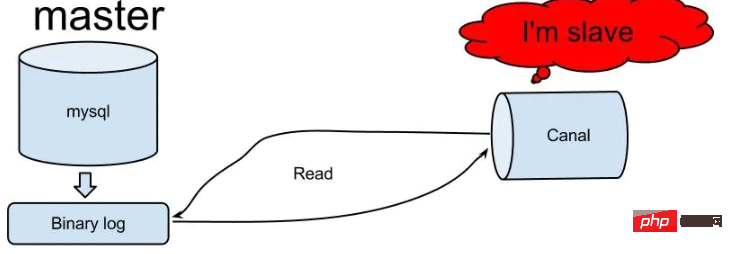 怎么使用SpringBoot+Canal实现数据库实时监控May 10, 2023 pm 06:25 PM
怎么使用SpringBoot+Canal实现数据库实时监控May 10, 2023 pm 06:25 PMCanal工作原理Canal模拟MySQLslave的交互协议,伪装自己为MySQLslave,向MySQLmaster发送dump协议MySQLmaster收到dump请求,开始推送binarylog给slave(也就是Canal)Canal解析binarylog对象(原始为byte流)MySQL打开binlog模式在MySQL配置文件my.cnf设置如下信息:[mysqld]#打开binloglog-bin=mysql-bin#选择ROW(行)模式binlog-format=ROW#配置My
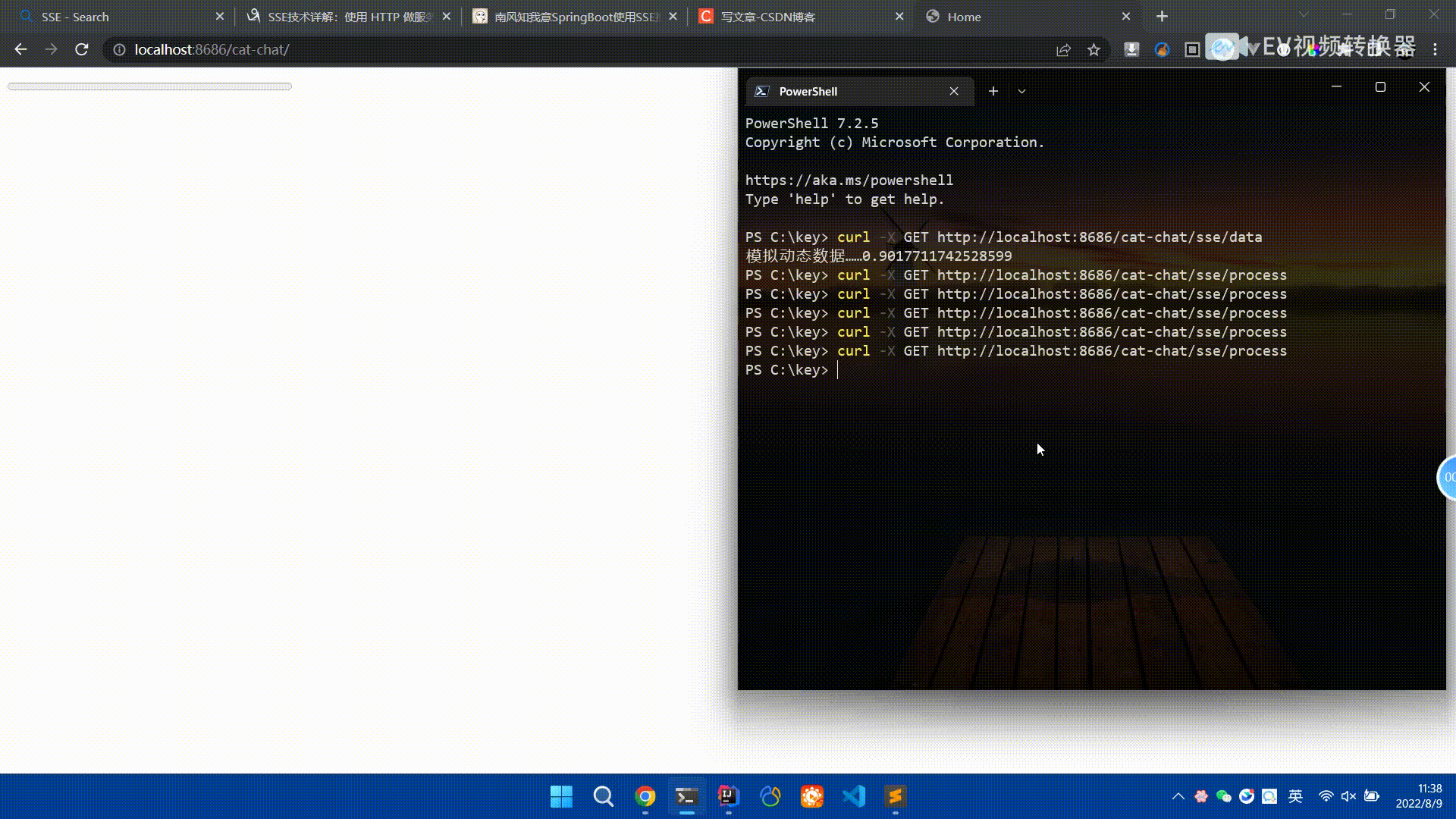 Spring Boot怎么使用SSE方式向前端推送数据May 10, 2023 pm 05:31 PM
Spring Boot怎么使用SSE方式向前端推送数据May 10, 2023 pm 05:31 PM前言SSE简单的来说就是服务器主动向前端推送数据的一种技术,它是单向的,也就是说前端是不能向服务器发送数据的。SSE适用于消息推送,监控等只需要服务器推送数据的场景中,下面是使用SpringBoot来实现一个简单的模拟向前端推动进度数据,前端页面接受后展示进度条。服务端在SpringBoot中使用时需要注意,最好使用SpringWeb提供的SseEmitter这个类来进行操作,我在刚开始时使用网上说的将Content-Type设置为text-stream这种方式发现每次前端每次都会重新创建接。最
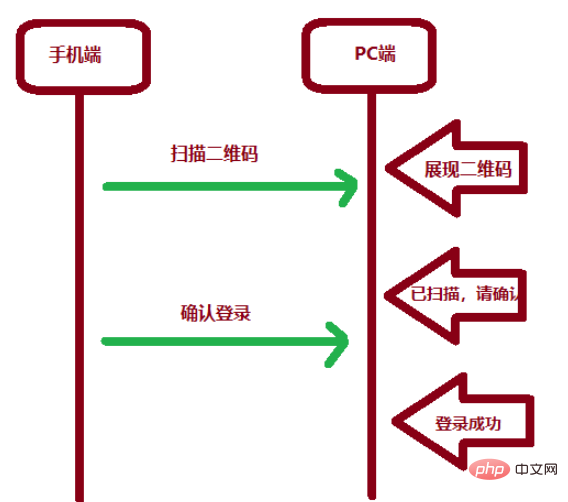 SpringBoot怎么实现二维码扫码登录May 10, 2023 pm 08:25 PM
SpringBoot怎么实现二维码扫码登录May 10, 2023 pm 08:25 PM一、手机扫二维码登录的原理二维码扫码登录是一种基于OAuth3.0协议的授权登录方式。在这种方式下,应用程序不需要获取用户的用户名和密码,只需要获取用户的授权即可。二维码扫码登录主要有以下几个步骤:应用程序生成一个二维码,并将该二维码展示给用户。用户使用扫码工具扫描该二维码,并在授权页面中授权。用户授权后,应用程序会获取一个授权码。应用程序使用该授权码向授权服务器请求访问令牌。授权服务器返回一个访问令牌给应用程序。应用程序使用该访问令牌访问资源服务器。通过以上步骤,二维码扫码登录可以实现用户的快
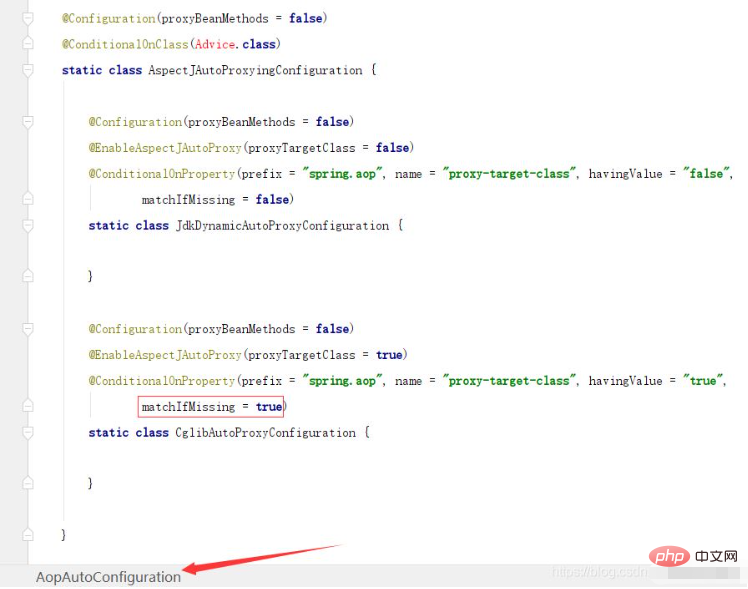 SpringBoot/Spring AOP默认动态代理方式是什么May 10, 2023 pm 03:52 PM
SpringBoot/Spring AOP默认动态代理方式是什么May 10, 2023 pm 03:52 PM1.springboot2.x及以上版本在SpringBoot2.xAOP中会默认使用Cglib来实现,但是Spring5中默认还是使用jdk动态代理。SpringAOP默认使用JDK动态代理,如果对象没有实现接口,则使用CGLIB代理。当然,也可以强制使用CGLIB代理。在SpringBoot中,通过AopAutoConfiguration来自动装配AOP.2.Springboot1.xSpringboot1.xAOP默认还是使用JDK动态代理的3.SpringBoot2.x为何默认使用Cgl
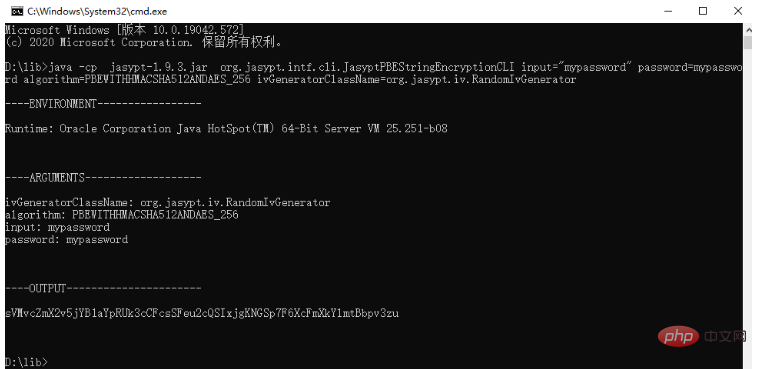 spring boot怎么对敏感信息进行加解密May 10, 2023 pm 02:46 PM
spring boot怎么对敏感信息进行加解密May 10, 2023 pm 02:46 PM我们使用jasypt最新版本对敏感信息进行加解密。1.在项目pom文件中加入如下依赖:com.github.ulisesbocchiojasypt-spring-boot-starter3.0.32.创建加解密公用类:packagecom.myproject.common.utils;importorg.jasypt.encryption.pbe.PooledPBEStringEncryptor;importorg.jasypt.encryption.pbe.config.SimpleStrin
 使用Java SpringBoot集成POI实现Word文档导出Apr 21, 2023 pm 12:19 PM
使用Java SpringBoot集成POI实现Word文档导出Apr 21, 2023 pm 12:19 PM知识准备需要理解ApachePOI遵循的标准(OfficeOpenXML(OOXML)标准和微软的OLE2复合文档格式(OLE2)),这将对应着API的依赖包。什么是POIApachePOI是用Java编写的免费开源的跨平台的JavaAPI,ApachePOI提供API给Java程序对MicrosoftOffice格式档案读和写的功能。POI为“PoorObfuscationImplementation”的首字母缩写,意为“简洁版的模糊实现”。ApachePOI是创建和维护操作各种符合Offic
 springboot怎么整合shiro实现多验证登录功能May 10, 2023 pm 04:19 PM
springboot怎么整合shiro实现多验证登录功能May 10, 2023 pm 04:19 PM1.首先新建一个shiroConfigshiro的配置类,代码如下:@ConfigurationpublicclassSpringShiroConfig{/***@paramrealms这儿使用接口集合是为了实现多验证登录时使用的*@return*/@BeanpublicSecurityManagersecurityManager(Collectionrealms){DefaultWebSecurityManagersManager=newDefaultWebSecurityManager();
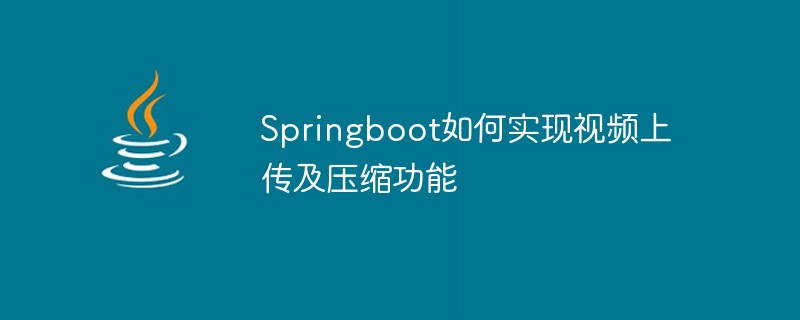 Springboot如何实现视频上传及压缩功能May 10, 2023 pm 05:16 PM
Springboot如何实现视频上传及压缩功能May 10, 2023 pm 05:16 PM一、定义视频上传请求接口publicAjaxResultvideoUploadFile(MultipartFilefile){try{if(null==file||file.isEmpty()){returnAjaxResult.error("文件为空");}StringossFilePrefix=StringUtils.genUUID();StringfileName=ossFilePrefix+"-"+file.getOriginalFilename(


热AI工具

Undresser.AI Undress
人工智能驱动的应用程序,用于创建逼真的裸体照片

AI Clothes Remover
用于从照片中去除衣服的在线人工智能工具。

Undress AI Tool
免费脱衣服图片

Clothoff.io
AI脱衣机

AI Hentai Generator
免费生成ai无尽的。

热门文章

热工具

Dreamweaver CS6
视觉化网页开发工具

SecLists
SecLists是最终安全测试人员的伙伴。它是一个包含各种类型列表的集合,这些列表在安全评估过程中经常使用,都在一个地方。SecLists通过方便地提供安全测试人员可能需要的所有列表,帮助提高安全测试的效率和生产力。列表类型包括用户名、密码、URL、模糊测试有效载荷、敏感数据模式、Web shell等等。测试人员只需将此存储库拉到新的测试机上,他就可以访问到所需的每种类型的列表。

安全考试浏览器
Safe Exam Browser是一个安全的浏览器环境,用于安全地进行在线考试。该软件将任何计算机变成一个安全的工作站。它控制对任何实用工具的访问,并防止学生使用未经授权的资源。

EditPlus 中文破解版
体积小,语法高亮,不支持代码提示功能

mPDF
mPDF是一个PHP库,可以从UTF-8编码的HTML生成PDF文件。原作者Ian Back编写mPDF以从他的网站上“即时”输出PDF文件,并处理不同的语言。与原始脚本如HTML2FPDF相比,它的速度较慢,并且在使用Unicode字体时生成的文件较大,但支持CSS样式等,并进行了大量增强。支持几乎所有语言,包括RTL(阿拉伯语和希伯来语)和CJK(中日韩)。支持嵌套的块级元素(如P、DIV),






